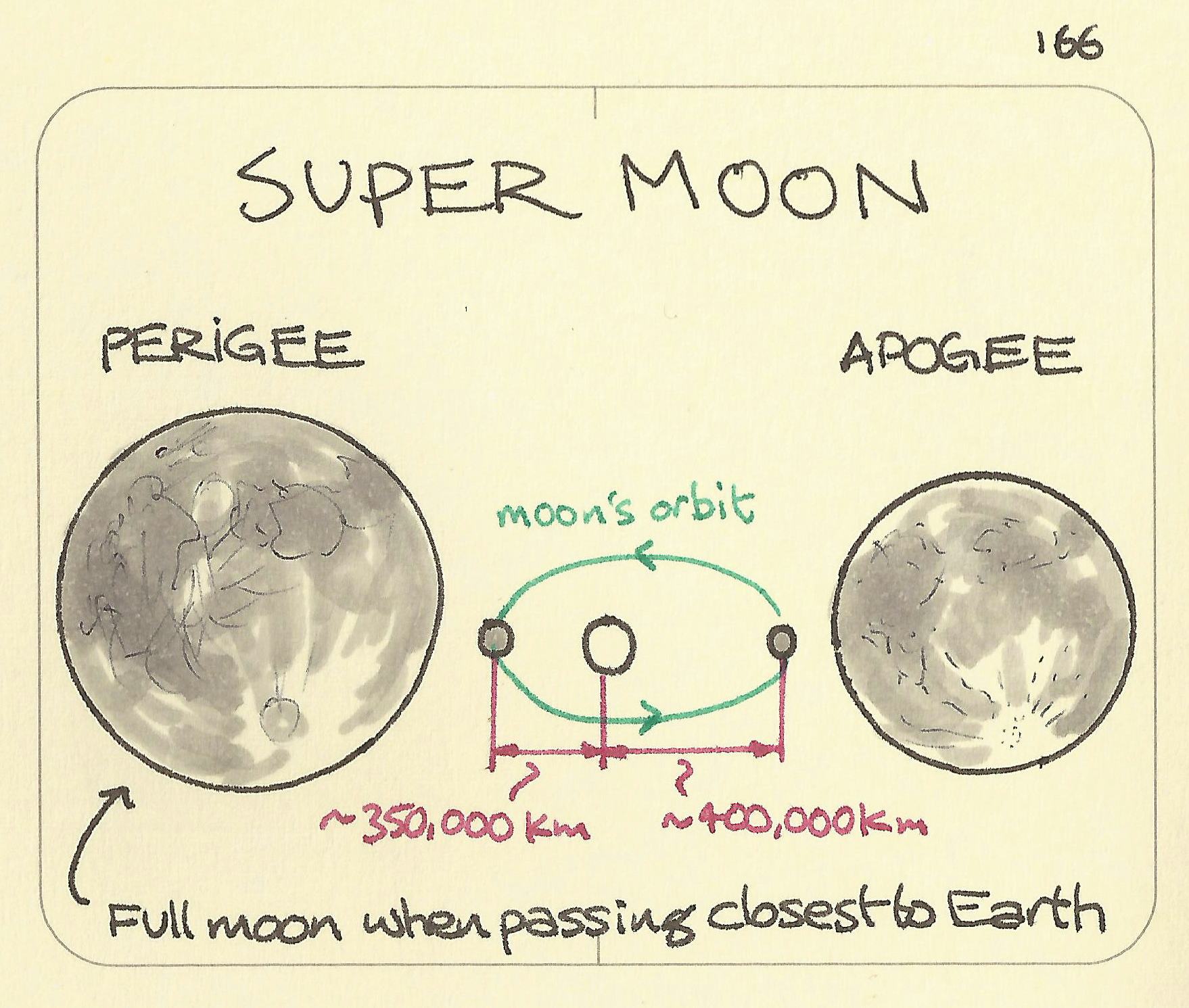Get my new weekly sketch in your inbox
Join over 30,000 people learning something new in a moment each Sunday.

Supermoon
A supermoon is when the Moon appears at its largest. Because most orbits are actually ellipses—an oval shape—rather than circular, the moon changes how close it is to Earth each day. A supermoon occurs when the Moon is at least 90% of perigee, the point at which it is closest to Earth. The point it is furthest from Earth is known as the apogee—for our moon, that's around 50,000km further away than when it's at the perigee.
According to NASA, a supermoon can appear around 17% larger and 20% brighter than the faintest moon of the year.
Super moons are a treat for photographers with big zooms and aspirational-looking cityscapes or yachts on the horizon (or ET on a flying bike). Hat tip to Science Llama.
You’re welcome to use and share this image and text for non-commercial purposes with attribution. Go wild!
See licence

